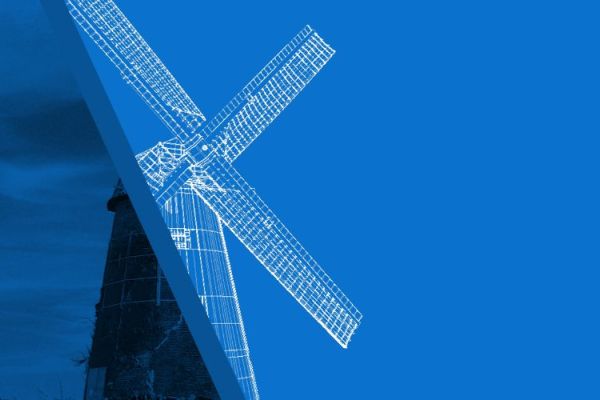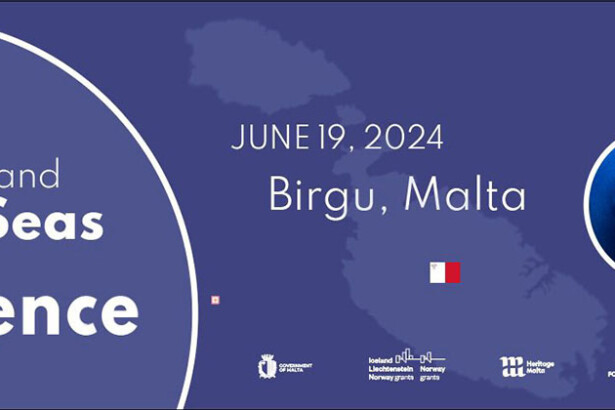Following the successful completion of their TwinIT! initiative Europeana has now published the online exhibition to showcase the campaign. Collected under the title Twin it! 3D for Europe’s Culture the exhibition expands on the 3D assets available directly from the TwinIT! collection and adds context to each of the submitted digitised cultural heritage assets in four easy to understand chapters.
Chapter 1: Digitally Unexplored Heritage sets the tone of the exhibition asking the important questions of:
- Why is 3D digitisation important for heritage sites?
- How can 3D digitisation help to preserve cultural heritage?
- How can 3D models highlight under-represented histories?
Illustrating Europeana’s response through TwinIT! submissions from Spain (Bote de Zamora), Slovakia (Rotunda of St. Margaret of Antioch in Šivetice), Portugal (the National Palace of Mafra), Luxembourg (Fort Louvigny and Villa Louvigny), Croatia (Momjan Castle in Momiano), Lithuania (Aristavėlės dvaras, Išorė), Malta (the Cittadella, Gozo), Germany (the Great Synagogue of Erfurt and the Old Synagogue of Wiesbaden), France (the Venus of Brassempouy), Belgium (A sarcophagus from the 21st dynasty of Egypt) and Denmark (Anne Marie Carl-Nielsen’s Mermaid sculpture)
Chapter 2: Popular Heritage guides the reader through some of the well known submissions to the TwinIT! collection but asks the viewer to think beyond just seeing sites, monuments and artifacts as something to visit by posing the questions
- How can 3D models help us get closer to past civilisations?
- How can 3D digitisation contribute to learning?
- How can 3D models help us understand religious heritage?
These are answered by making connections between the digital assets in the 3D collection from Slovenia (a partial wooden dating from around 3,200 BCE), Bulgaria (The Madara Rider rock relief), Austria (Carnuntum’s Heidentor), Latvia (The Freedom Monument in Riga), Slovenia (The National and University Library in Ljubljana), Estonia (The Tartu Old Observatory), Finland (Petäjävesi Old Church), Poland (Opatów Collegiate Church and Krzysztof Szydłowiecki’s tombstone) and as a guest entry Zekate House from Albania. The 3D assets are accompanied with 2D images from Czechia and Hungary.
Chapter 3: Fragile Heritage looks into cultural heritage that is at risk either from natural or human intervention allowing the view to consider questions such as:
- How do 3D objects help us understand maritime history?
- What can 3D objects show us about ancient landmarks?
- What can 3D renderings tell us about architecture?
The exhibition uses entries from Belgium (An iguanodon skeleton), the Netherlands (Scheepsglobe), Cyprus (The Lambousa fishing trawler), Sweden (Stora Hammars I Stone), Ireland (The North Cross at Ahenny), Cyprus (The Harbour Castle of Paphos), Romania (Chindia tower in Târgoviște and Minovici villa, Bucharest), Cyprus (Neolithic village of Khirokitia Vouni) to explore the questions and their intertwining stories.
Chapter 4 Heritage Stories takes the visitor on a journey through modern technology’s application to cultural heritage
- How can we use 3D technology to tell a story?
- How can 3D models improve the experience of a physical visit?
- How do virtual museums use 3D technology?
Using the TwinIT! collection assets from Italy (Farnese Hercules statue), Greece (The Temple of Apollo at Delphi), Belgium (Maria Lactans) and France (the Caves of Lascaux) this chapter include example of how 3D assets can be reused to engage the visitor from traditional video presentations to virtual reality, 3D replica creations to augmented reality. These show the exciting possibilities and potential of how digital assets can be enriched and developed to bring the past back to life and engage new audiences.
The Europeana team must be congratulated for bringing together the exhibition which covers 37 entries into the TwinIT! collection, from prehistory to the modern age, and 26 countries. The exhibition does an excellent job of introducing the viewer to the TwinIT! collection creating an understandable narrative which leaves the genuine desire to explore the Europeana treasure house of culture and heritage further to make new connections and narratives of ones own.
What stories will you discover in Europeana? What stories will you create with Europeana? Start your journey of discovery and inspiration at Twin it! 3D for Europe’s Culture online exhibition today!



